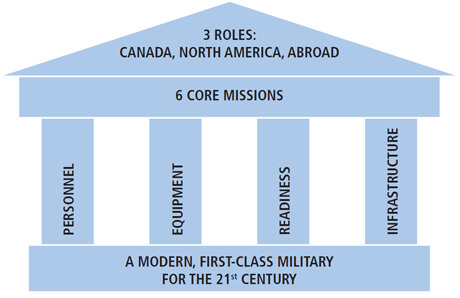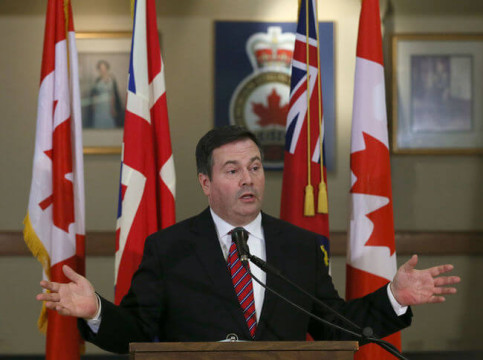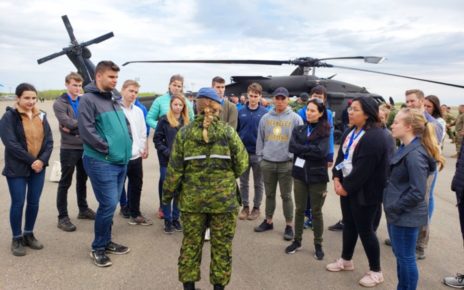The first half of this series looked at the structure, intent and development of the Canada First Defence Strategy (CFDS) in 2006; this second part will attempt to ascertain its successes and failures. The early days of the Canada First Defence Strategy (DFPS) during the Afghanistan deployment immediately showed positive results with the Strategic Lift Aircraft replacement program. Recognizing the capability gap of the Canadian Forces (CAF) in the fields of global transportation and deployment, capital project funds from the DFPS were invested to purchase four C-17 Globemaster aircraft. With an additional C-17 deployable since 2014, and the purchase of 15 C-130J Hercules aircraft for additional logistics support, the CAF no longer has to rely on leasing foreign options such as the Russian IL-76 Ilyushin. This grants the CAF the ability to launch expeditionary military or disaster relief teams anywhere in the world without relying on others.
With an investment package laid out 2008-2028 totalling $490 billion, the CFDS also planned to modernize other elements of the CAF. Projects that are currently in various stages of procurement include 2,300 army supply trucks, 100 refurbished Leopard A2 tanks from the German Bundeswehr, and 6 Arctic Patrol Ships (AOPS) based on the Norwegian Svalbard class. While these plans are seen by many as a welcome overhaul of the CAF, these ambitious procurements also highlight the major flaw of the CFDS; its aspirations have come to outpace its capabilities.
In 2011, the CFDS was declared unaffordable at the same time that Defence Minister Jason Kenney announced new procurement plans for air superiority fighters, armored vehicles, and new maritime patrol planes. Because of the resources invested in programs such as the AOPS program and Leopard A2 refurbishments, the CAF has since been forced to make cuts to basic maintenance and training. A 2013 memo from CAF General Tom Lawson to the Department of National Defence (DND) warned that continued budget cuts threatened the availability of key fleets of aircraft, ships and army platforms. Why has the CFDS not been able to deliver what it was originally slated to achieve?
The main culprit, the source of so many economic woes for the global community, is still the 2008 financial recession. Despite a promise of 20 years of predictable, extensive funding growth, the DND announced its first three year operating freeze in 2010. While the promised 2% raise did appear in the 2011/2012 DND fiscal cycle, cuts to the DND’s Strategic Review and capital cuts under the Deficit Reduction Action Plan removed upwards of $2.2 billion from the DND’s budget. The 2012 and 2014 budgets fared even worse, with a further $6.7 billion earmarked for CFDS capital projects removed entirely, and an additional budget freeze announced. According to David Perry, a senior defence analyst with the Conference of Defence Associations Institute (CDAI), “the spending now on the military, when you adjust for inflation is back where it was, at roughly 2007 levels.”
The DND budget for 2014-2015 was just over $20 billion, barely enough to cover our deployments and overhead costs. The CAF has also become much more active during the past decade: fighting in Afghanistan, engaging in anti-piracy patrols in the Red Sea, enforcing a no-fly zone in Libya, and training local military assets in Ukraine, etc. To retrofit and repair from these constant deployments, as well as oversee required modernization programs, the CAF will require a further $33-$42 billion over the next decade.
Matters are also compounded over the problematic bureaucracy of CFDS advised procurements. As many of the recommendations are large scale projects such as the F-35 Joint Strike Fighter or AOPs program, they require large amounts of capital funds to be set aside for contract use. Many of these projects have gone through several years of negotiations, and the capital funds earmarked for them have gone reserved and unspent in the budget. Since the introduction of the CFDS in 2008, $8.1 billion has not been used as intended, more than triple the static amount from the pre-CFDS years. For the DND’s 2014-2015 fiscal cycle, this amounts to over $1.5 billion unspent a year. While prudence and due process are desirable qualities in a government, the CAF not possessing modernized transport trucks after a decade of negotiations shows the problems and inefficiencies inherent in the current procurement process guided by the CDFS.
The CFDS was a credible, if overly broad, defence policy that was functional only if the economic and political environment around it remained unchanged. During the defence expenditure increases during the Afghanistan conflict, it worked as intended, highlighting and solving capability gaps within the CAF such as the Strategic Airlift Program. The CFDS could not adequately forecast the cyclical nature of global economics, and was forced to withdraw from its predictable funding increases only two years from its inception. With the CAF engaged in numerous operations around the world, Canadian defence policy makers have a tough decision on their hands. They can find ways to increase defence spending and restructure, reduce and re-implement the ambitious procurement and modernization projects in the CDFS. The only other option is to admit that without a much increased and stable operating budget, the CAF cannot hope to meet the guidelines laid out for it in the CDFS.





